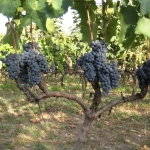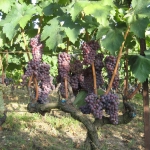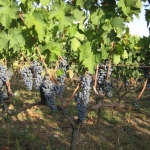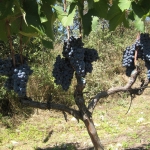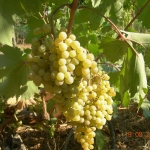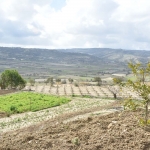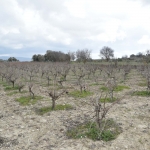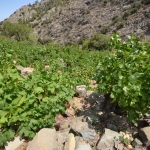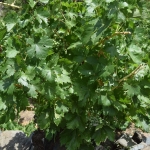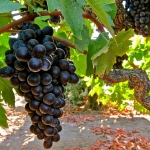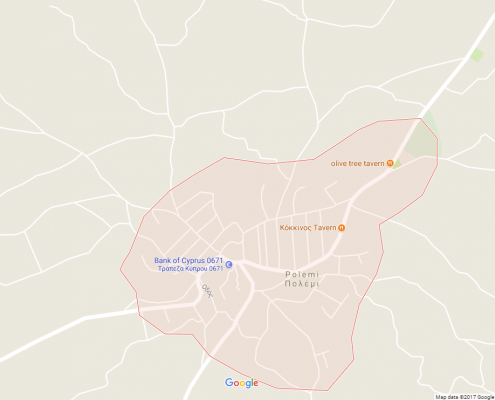Νatural Environment
Polemi is a village with green surroundings. During spring all kinds of colors prevail and natural beauty emerges with happy colors and sweet scents in all its pride. Cultivated pieces of land are combined with wild plantation, mostly with the “polemi tulip”, a flower famous for its beauty.
The village is well known for viniculture. In 1985 Polemi was the fourth village in viniculture in Paphos. Viniculture was initially developed thank to Cleopas, the abbot of the Kykkos Monastery, who suggested the bestowal of the land to the inhabitants with the provision to cultivate vineyards. Viniculture was developed in the village since vineyards do not really need water.
The village is filled with fruit-bearing trees such as almond trees, apple trees, mulberry trees and apricot trees. There used to be numerous oak trees that were uprooted for vineyards to be planted. The same happened with mulberry trees.
What add to the beauty of the village are the tulips, which blossom “amongst the wildflowers, lazarous, yellow and white daisies”. Tulip cultivation in the village possibly started in mid 17th century, when tulips were very popular. According to the president of the Tulip Association, Mr. Andreas Onisiforou Polemiti, tulips were secretly imported to Cyprus by a trader when their price was extremely high. Tulip cultivation in the village was deserted when it stopped being profitable.
However, as Mr. Andreas Onisiforou Polemiti mentions, the beautiful flowers “prolonged their stay at the village as wild flowers”. The agricultural use of land and the use of pesticides destroyed the flowers but not their bulbs. The first tulip flowers blossom at the beginning of March. According to Mr. Onisiforou, “the single plant and the leaves grow quickly, and if the weather helps, then the flower appears after ten to fifteen days”.
It must be noted that the inhabitants love this wonderful flower and this is shown with the establishment of the “Friends of Tulip Association” in 2001. Main aim of the association was the elimination of the flower’s destruction even in private properties, since it is not protected by law.
Sources:
Speech by Andreas Onisiforou Polemiti at the “Tulip Festival”
Constantinou Philippos “The genesis of the Polemi-Paphos Gymnasium”, “Aletheia” newspaper, 15th January 2006
Mr Andreas Onisiforou Polemitis
Wild Vegetation
Cultivations
Olive Cultivation
Olive cultivation constitutes one of the occupations of the residents of Polemi.
Presented below are the main cultivating cares regarding olive trees:
Preparing the ground is one of the first tasks olive cultivators need to perform. For the soil to be ready, it must be enriched with nutritious elements and be freed from pesticides.
Pruning the olive trees is very important for their productivity. This takes place either at the beginning of spring or during the harvest period. During pruning, all branches which are considered useless are cut so that only the fruit-bearing branches will remain on the tree.
The irrigation of the olive trees must be carried out with extreme care since olive trees do not require frequent irrigation. However, during the florescence period, that is during the spring months, the irrigation of the olive trees is crucial both for the increase of their production as the quality of their fruit.
The harvest period takes place from the end of October until the end of February. To collect the olives cultivators use the traditional method of caning, as well as modern methods with modern machinery.
The traditional method of caning includes beating the olive tree with a wooden stick to that the olives will fall to the ground and more specifically on the huge sheets which are previously placed under the trees. Next, the olives are put into cases and transferred to the olive oil press for the production of olive oil.
Finally, some olive cultivators follow the traditional method for the multiplication of olive trees called grafting. This particular method involves attaching a branch of olive tree to another tree, while it takes three years after it has been planted for the tree to produce any crops
Source:
Ionas Ioannis, Traditional Cyprus Professions, Nicosia, 2001, p.487-49
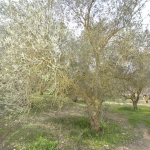
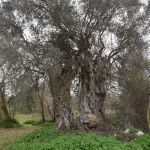
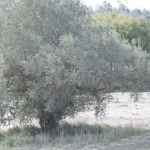
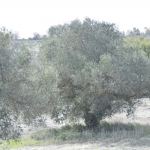
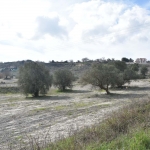
Viniculture
Systematic viniculture started in the village in 1985. However, the hills of Polemi were planted with vineyards from the beginning of the 20th century, from 1920.
The whole of lowland Polemi was initially cultivated with cereals. However, that was not lucrative because pf the multiple destructions caused either by a kind of insect “sirivida” or floods. Mr. Andreas Onisiforou Polemitis mentions that “the land seemed like a swamp or a marsh” and all the products were only suitable for stock breeding. It must be noted that the largest part of the lowland was property of the Kykkos Monastery.
The inhabitants had to pay rent to the Monastery so as to cultivate that land. After the continuous destructions of the cultivations, Cleopas, the abbot of the Monastery suggested the bestowal of the land to the inhabitants with the provision to cultivate vineyards. Mr. Andreas Polemitis holds that the land was transferred according to a “buying-renting system”, as half of the land given to the inhabitants would belong to the Monastery for thirty years. After thirty years of intensive cultivation, the villager would have the right to keep or sell the piece of land. Hence, the land once belonging to the monastery gradually became the famous vineyards of Polemi.
In other words, as Mr. Constantinou Philippos writes in “Aletheia” newspaper, monastery land was initially given on “a partnership basis aiming at vineyard cultivation”. He continues mentioning that “around 1960, during Chrysostomos’s abbotship” the land was bestowed to its cultivators “on a full basis”.
During the second half of the 20th century SODAP winery was founded in Paphos, thus, motivating viniculture. In 1947 vineyards were all over the village and viniculture was the main occupation of all inhabitants as it was quite profitable. It must be noted that viniculture was extremely helped by the climate. To be more specific, vineyards do not need a lot of water. The economical blooming is also connected with the population growth of the village. Explicitly, the five-member families of the village became seven-member families.
Some years later, in 1969, the “Paphos Industrial Company”, known as VEAP was founded on initiative of the inhabitants of Polemi. The industry was provided with grapes. It liquidized them and sold them for further elaboration. The factory went bankrupt due to a series of financial problems. VEAP loaned 160.000 CP from the government but that did not help at all. The factory was finally sold to LOEL that paid the debt. However, LOEL did not manage to succeed. The factory functioned for almost four years. It offers its services to a private winery that follows European standards over the last decade. It also serves the needs of Polemi and the surrounding villages.
An outlier of the shareholder SODAP winery functioned in 2004 with the name KAMANTERENA. The factory serves the needs of the locals and it is the only Cypriot winery that is built according to European provisions.
Viniculture was initially based on “traditional vineyards”. These however, were recently replaced with new and wine-producing vineyards. This happened two decades ago. This resulted, as Mr. Polemides notes, to serious reduction of cultivated land.
Sources:
Mr. Andreas Onisiforou Polemitis
Constantinou Philippos “The genesis of the Polemi-Paphos Gymnasium”, “Aletheia” newspaper, 15th January 2006
